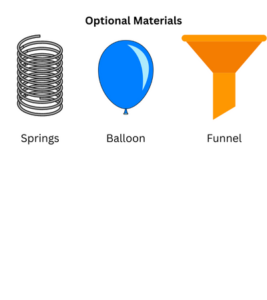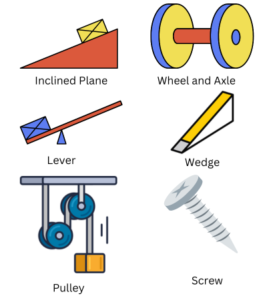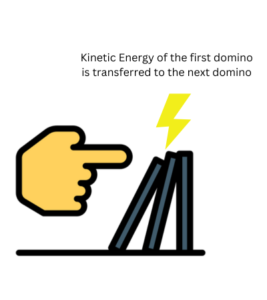
Marvelous Marble Machine: A Rube Goldberg Adventure!
Description: Get ready for an exciting journey into the world of Rube Goldberg machines! In this experiment, you will design and build your own marvelous marble machine using a series of interconnected simple machines. Explore the principles of cause and effect, transfer of energy, and chain reactions as you set off a spectacular chain of events with marbles, ramps, dominos, and more. Let your creativity flow as you construct a complex contraption that completes a simple task in the most extraordinary way!
Scientific Principles:
- Cause and Effect: The experiment will teach you about cause and effect relationships, where one action leads to another. You will learn how different simple machines work together to create a chain reaction, setting off a series of events.
- Transfer of Energy: The marble machine demonstrates the transfer of energy from one object to another. You will explore how potential energy is converted into kinetic energy as marbles roll down ramps, knock over dominos, and trigger various mechanisms.
- Engineering: The experiment will teach you how to utulize the 6 simple scientific machines in your marble run.
Simple Machines:
- Inclined Plane: An inclined plane is a ramp that makes it easier to move objects from a lower to a higher level or vice versa. You can use inclined planes to create ramps for marbles to roll down or for objects to slide on.
- Lever: A lever is a long, rigid object that pivots on a fulcrum. It can be used to lift or move objects with less effort. You can create levers using rulers or popsicle sticks to redirect the path of the marbles.
- Pulley: A pulley is a wheel with a groove that a rope or cable can run through. It helps to lift or lower objects by changing the direction of force. You can use pulleys to create systems that raise or lower objects in your machine.
- Wheel and Axle: A wheel and axle consist of a wheel (a circular object) and an axle (a rod that passes through the center of the wheel). It allows for the easy rotation of objects. You can use toy wheels and dowels to create rotating elements in your machine.
- Wedge: A wedge is a triangular-shaped object with a sharp edge. It can be used to split, hold, or separate objects. You can incorporate wedges into your machine to create movements or trigger actions.
- Screw: A screw is an inclined plane wrapped around a cylindrical rod. It allows for the easy movement of objects in a circular motion. You can use screws or spiral-shaped objects to add rotational movements to your machine.
Equipment Needed:
- Marbles
- Cardboard boxes, tubes, and other recyclable materials
- Rulers or popsicle sticks
- Toy wheels and dowels
- String or fishing line
- Tape, glue, and scissors
- Dominos
- Cups or containers
- Optional: Pulleys, bells, chimes, bells, toy cars, toy animals, bells, small balls, small baskets
Recommended Items (10):
- Cardboard tubes
- Popsicle sticks
- Tape
- String or fishing line
- Marbles
- Rulers
- Dominos
- Toy wheels
- Cups or containers
- Recyclable materials like plastic bottles or cereal boxes




Optional Items (10):
- Pulleys
- Bells
- Chimes
- Toy cars
- Toy animals
- Small balls
- Small baskets
- Springs
- Balloons
- Funnels
Equipment Difficulty Rating: ★★★★☆ (4/5) Difficulty of Completing the Experiment: ★★★★☆ (4/5)
Prepare for an exciting adventure as you build your own marvelous marble machine! Learn about cause and effect, transfer of energy, and chain reactions as you construct a complex contraption using simple machines. Let your creativity soar and transform ordinary objects into extraordinary mechanisms. It’s time to embark on a thrilling Rube Goldberg adventure!

Example Part 1: Domino Chain Reaction
- Set up a row of dominos in a straight line.
- Leave a small gap between each domino.
- Gently tap the first domino to make it fall.
- Observe as the falling domino triggers a chain reaction, causing each subsequent domino to fall.

Example Part 2: Marble Ramp
- Use a piece of cardboard to create a ramp by propping it up at an angle.
- Place a marble at the top of the ramp.
- Watch as the marble rolls down the ramp due to gravity.
- Ensure the ramp leads to the next part of the machine, such as a cup or container.
Example Part 3: Lever Action
- Attach a ruler or popsicle stick to a fixed point (e.g., a stack of books) as a fulcrum.
- Place an object (e.g., a toy car) on one end of the ruler or popsicle stick.
- Push down on the opposite end of the ruler or popsicle stick to lift the object.
- Allow the lifted object to roll or slide down a surface, triggering the next part of the machine.
Example Part 4: Pulley System
- Attach a pulley to a stationary object, such as a shelf or table edge.
- Thread a string or fishing line through the pulley, leaving both ends hanging down.
- Tie one end of the string to a container or basket.
- Place objects, such as small balls or toys, into the container.
- Pull the other end of the string downward to lift the container, releasing the objects onto a target or another part of the machine.
Example Part 5: Wheel and Axle Rotation
- Attach a toy wheel to the end of a dowel or rod.
- Create a platform using cardboard or other materials.
- Insert the dowel or rod through a hole in the platform, allowing the wheel to rotate freely.
- Place an object on the platform that will be spun or rolled when the wheel is turned.
Other Parts (10):
- Pop a balloon to release air and trigger a motion.
- Use a pulley to raise a flag or a banner.
- Arrange a row of small cups, each tipping into the next when hit by a marble.
- Create a simple seesaw that launches a small ball into the air when weighted on one end.
- Construct a maze using cardboard or tubes for a marble to navigate through.
- Attach a string to a door handle, pulling it to set off a chain reaction.
- Use a lever to flip a switch, turning on a light or activating a sound effect.
- Drop a marble onto a xylophone or chimes to produce musical sounds.
- Inflate a balloon until it pops, releasing air and triggering the next step.
- Connect a series of dominoes, ramps, and tubes to guide a ball through various obstacles.
The beauty of a Rube Goldberg machine is its open-ended nature. You can let your imagination run wild and come up with endless possibilities for different parts and interactions. Explore different materials, objects, and movements to create a unique and exciting chain reaction. Remember to have fun and enjoy the process of building your own marvelous Rube Goldberg machine!

